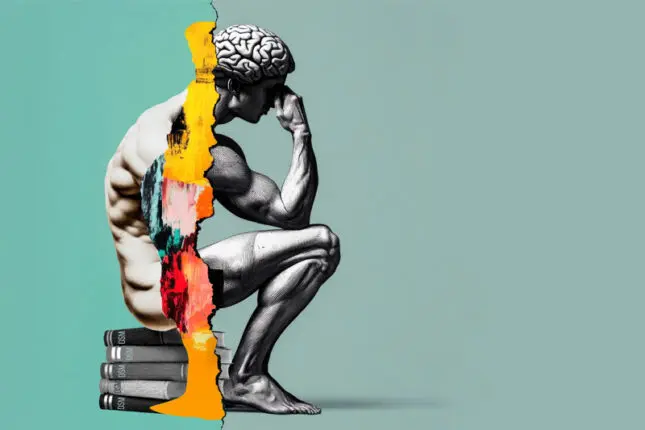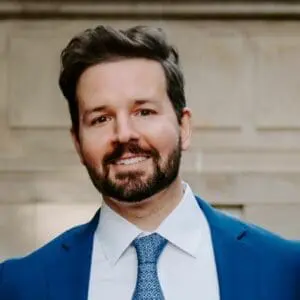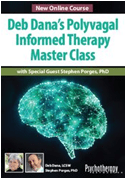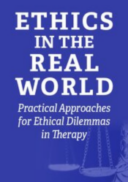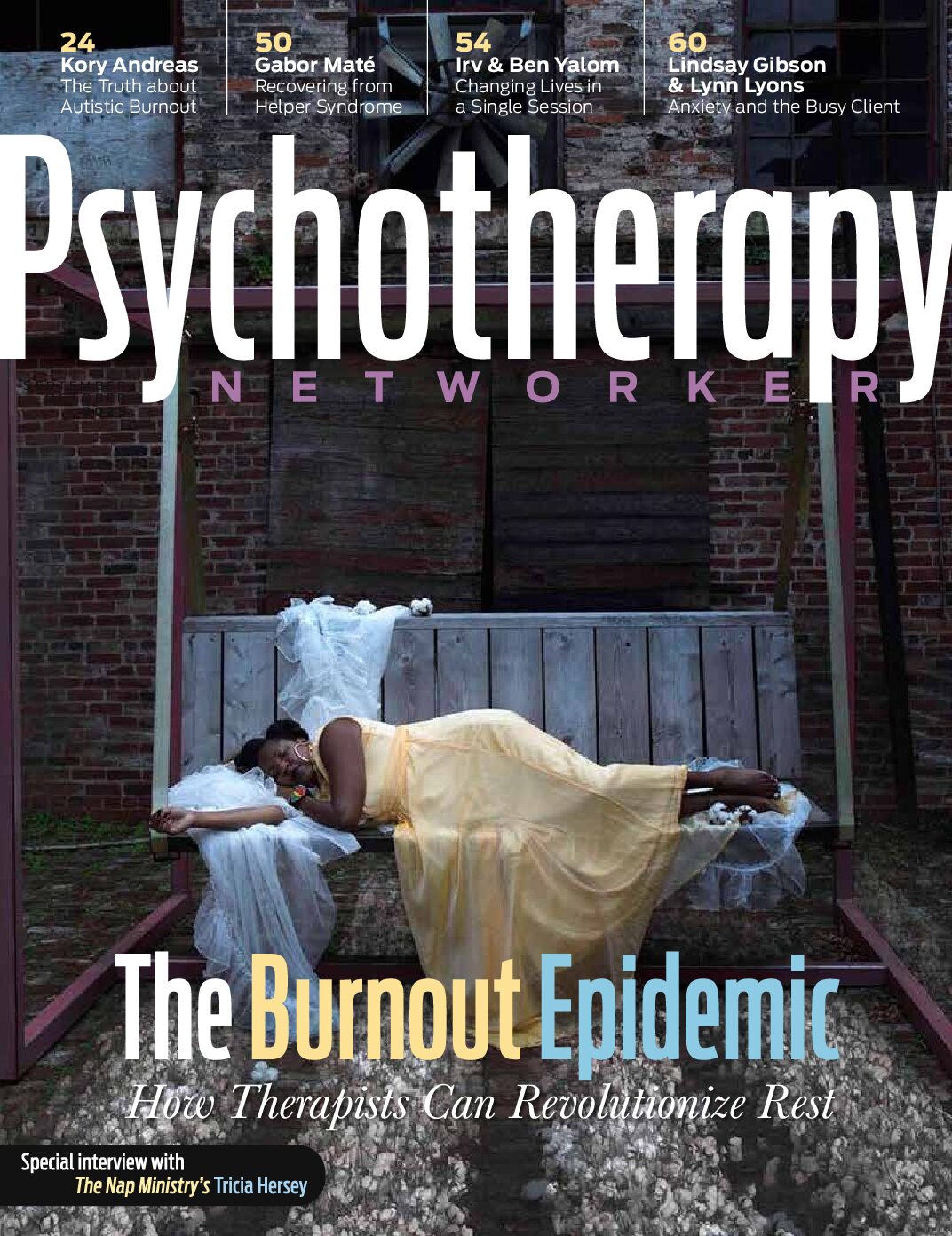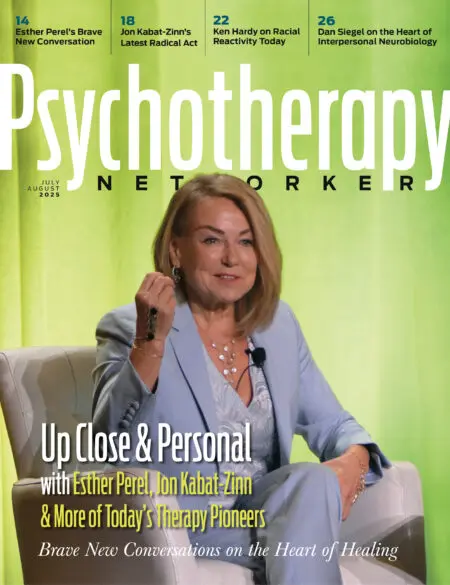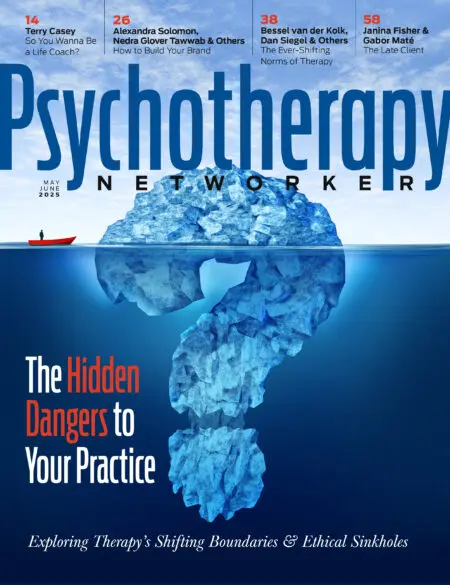In the fall of 1978, a young assistant psychology professor by the name of Steven Hayes—the future originator of Acceptance and Commitment Therapy (ACT)—was sitting in a department meeting when a group of professors began arguing—“in a way that only wild animals and full professors are capable of,” he later recalled. Suddenly, an intense feeling came over him.
“I felt like I was going to pass out,” he says. “My heart was racing so fast I couldn’t count the beats.” Hayes opened his mouth, but no sound came out. His eyes darted helplessly around the room before finally locking on the others, who shot him a look of confusion and returned to fighting.
Hayes clutched his chair, and after a few seconds—for Hayes, an eternity—the room stopped spinning. This was the beginning, he recalls, “of my journey into the hell of panic disorder.”
Hayes spent the next three years struggling to keep his panic attacks at bay, worried that they’d negatively impact his career. But they persisted, and one night, collapsed on a brown-and-gold shag carpet at 2:30 in the morning, he found himself in the thick of his worst panic attack yet.
For Hayes, it was a moment of reckoning. Why was this still happening? He had a diagnosis. He’d tried all of the “logical, reasonable, sensible, and pathological” ways to treat it. Nothing had worked. So why, in this seemingly golden age of healing, was he still suffering?
Then, in the thick of this panic attack and devoid of answers, he did something out of pure desperation. Instead of trying to find a way out of the panic by using “evidence-based therapy” methods, he ran toward it, swearing to himself that he’d never run from his own experience again. Something clicked, and when he finally stood up, the fog had lifted. “I knew my life had changed,” he explains.
That moment sent Hayes on journey into the science of how change really happens. Why was the field content with treatments that only worked for some people? he wondered. Didn’t the rest matter too? But calling out the field’s shortfalls would be akin to sacrilege. How does one even begin to challenge the doctrines of a mental healthcare system that’s been around for generations? Even if therapists didn’t take them for gospel—and many did—these were the waters they’d been swimming in their entire careers. What other options were there?
Hayes started looking for answers by pulling up the floorboards of the dominant diagnostic frameworks, the DSM and ICD, upon which countless modalities have been built. He spent the next four decades constructing a new framework, one directed at how therapists can facilitate real change. He distilled it to helping clients learn how to be more open, aware, and actively engaged in building a meaningful life—and then extending those gains to their relationships and their body. Then, six years ago, still focused on pulling up those floorboards, he and his colleagues discovered something shocking.
“American psychology and psychiatry have dirty hands,” he told a room of therapists from the main stage at the Innovations in Psychotherapy Conference last October, delivering yet another blistering condemnation of our field’s most popular diagnostic frameworks.
He called up a series of black and white photos of stern-looking white men on the screen behind him. “Our methods are based on racism… intertwined with eugenics,” he continued. “The early developers of the statistics behind diagnostic labels were racists and antisemites…. Their books were designed to determine who was worthy of having children and who wasn’t.”
But it isn’t just the creators of these frameworks who are to blame, Hayes said. It’s the modern-day professionals too, who unknowingly keep these frameworks afloat. “The statistics we rely on to apply the science of psychotherapy to particular people are false,” Hayes told the crowd. “Or at least we don’t know if they’re true.”
He proceeded to point out how even though treatments—even his own ACT—work for most clients, there are many “anomalies”—clients who suffer more even when trying an evidence-based treatment. These are people who’ve been historically overlooked in developing treatments, deliberately ignored in studies, and deemed outliers in order to magnify a model’s successes and downplay its failures.
Today’s treatments “are leaving people behind,” Hayes continued, “because their uniqueness has failed to be seen. These people matter. They could be your patient, your partner, or your child. We cannot be content with an imperfect model just because it works for most people.”
If the creators of our diagnostic bibles were deeply flawed individuals who built their frameworks around racist ideologies, and those frameworks have largely survived due to inaccurate statistical methods, should we just throw the frameworks out and start over? It may seem unimaginable, but we have no other choice, Hayes says: today’s problems are too urgent to do anything else.
“It’s time to forge a new way forward,” Hayes told the crowd. “Challenges like climate change and racism and sexism and immigration are huge—and therapists need to be a part of the solution.”
After more than 150 years of DSM and ICD dominance, could a new diagnostic framework really take their place? One that’s not just progressive, but comprehensive and effective too? Hayes believes it’s possible, and says the way forward is to intensively model the world of people, couples, and families on the micro level and develop general principles of diagnosis and therapeutic change on that foundation. His team calls this new approach idionomic analysis. “The particular,” he says, “is in fact the most general.”
Hayes says ACT, which he created in the wake of his own struggles decades ago, is a more humanistic, client-centered approach to treatment, and that its set of processes he calls “psychological flexibility” allows clients to have a more personalized diagnosis.
At the cornerstone of ACT is a question, Hayes says: How do we help our clients have more meaningful lives? Once they’ve answered that question, they can extend that knowledge to their body, their relationships, and the wider culture. They can use ACT to address physical problems around diet, sleep, exercise, and physical diseases, as well as social concerns, like how to be a better caregiver or parent, how to grapple with prejudice, and how to become a kinder human being. ACT also pulls from literature on healing from all over the world—not just the Western world. While the DSM and ICD use aggregate data to draw conclusions—“pulling from ivory tower medical centers in the Western world” and “turning people into categories”—nearly half of the 1,400 randomized trials on ACT come from lower- and middle-income countries. ACT, Hayes says, operates from a simple premise: develop your treatment plan based on the processes revealed by the client in front of you.
Hayes says not a single day has gone by where he didn’t remember that fateful night on the brown-and-gold shag carpet. Psychotherapy still hasn’t entered a new era of diagnosis, but if he has anything to say about it, it’s only a matter of time until it does.
Chris Lyford
Chris Lyford is the Senior Editor at Psychotherapy Networker. Previously, he was assistant director and editor of the The Atlantic Post, where he wrote and edited news pieces on the Middle East and Africa. He also formerly worked at The Washington Post, where he wrote local feature pieces for the Metro, Sports, and Style sections. Contact: clyford@psychnetworker.org.

